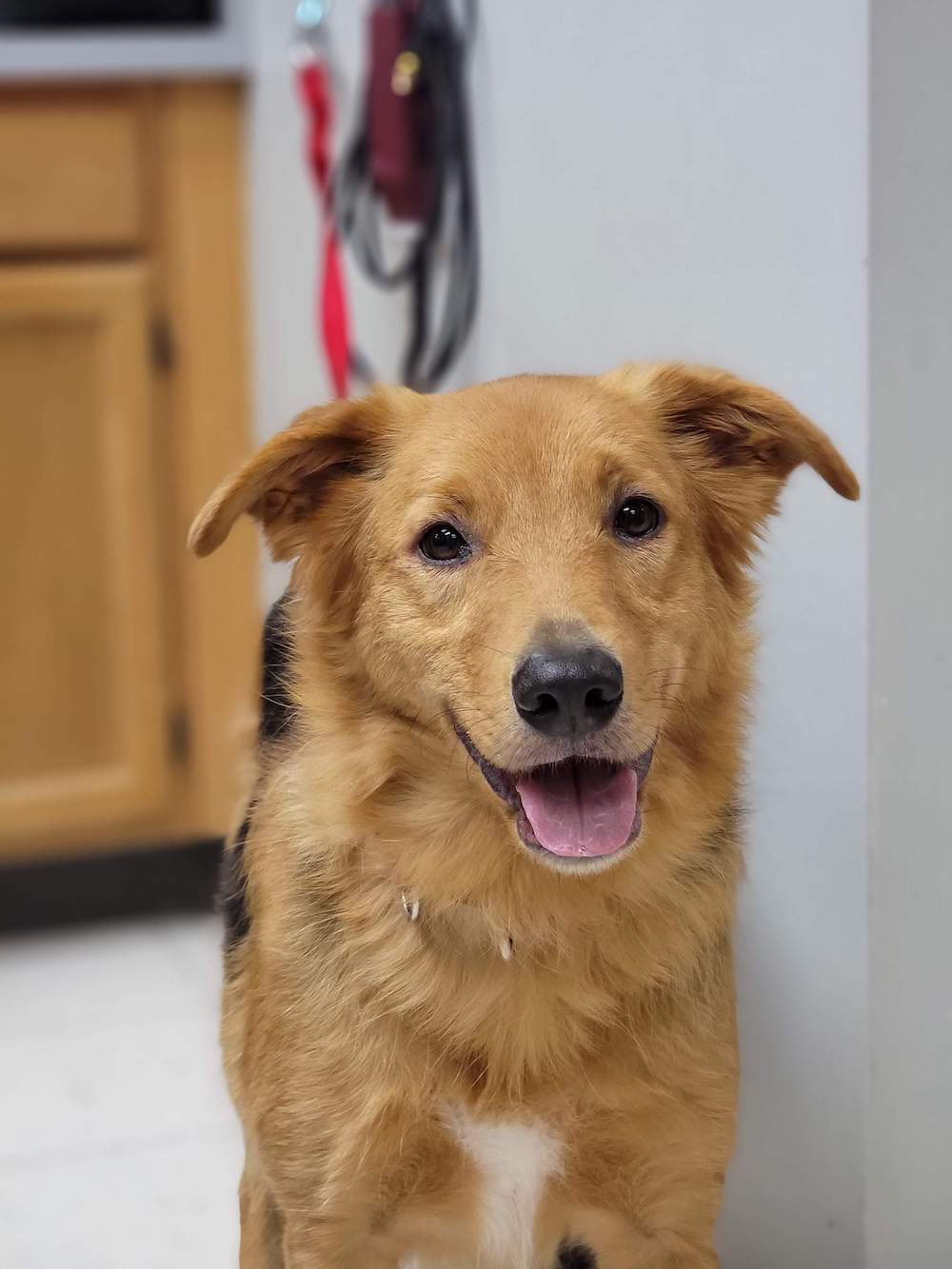The Duty of Ultrasound and CT Check in Modern Veterinary Practices: Insights From Experienced Professionals
In modern vet methods, ultrasound and CT scans significantly enhance diagnostic capacities. These imaging strategies give important understandings right into animal health and wellness, leading therapy choices. Experienced experts recognize the unique benefits of each modality. Ultrasound provides real-time assessments, while CT scans supply intricate anatomical details. Recognizing their applications and duties raises vital questions concerning their influence on person outcomes and the future of veterinary diagnostics. What insights can be acquired from their incorporated use?
Understanding Ultrasound in Veterinary Medication
Ultrasound is a vital analysis tool in vet medication, using a non-invasive method to envision inner structures. This imaging strategy employs high-frequency audio waves to create real-time photos of organs and cells, allowing vets to examine problems without surgical intervention. Typical applications consist of reviewing the heart, liver, kidneys, and reproductive body organs, in addition to keeping an eye on pregnancies.The procedure is relatively quick and can be done in various settings, making it an easily accessible option for vets. Unlike radiography, ultrasound gives thorough details regarding soft cells and blood circulation, which is essential for exact diagnoses.Veterinary specialists rely upon ultrasound to discover irregularities such as growths, cysts, and fluid buildup. Its ability to lead biopsies and other treatments additionally boosts its utility in professional technique. By providing a safe and reliable method to check out interior composition, ultrasound has come to be a cornerstone of modern-day vet diagnostics.
The Advantages of CT Scans for Animal Diagnostics
CT scans offer considerable advantages in veterinary diagnostics by providing enhanced accuracy in identifying inner conditions (CT Scans For Dogs). As a non-invasive imaging strategy, they ensure the security and comfort of pets during exams. In addition, CT checks facilitate a detailed evaluation of inner structures, allowing for much more efficient therapy preparation
Improved Analysis Precision
Innovations in imaging modern technology have actually substantially improved diagnostic precision in vet medication, specifically through using CT scans. These scans give thorough cross-sectional photos of a pet's internal frameworks, permitting veterinarians to recognize problems with accuracy. The high resolution and three-dimensional capabilities of CT imaging facilitate the discovery of conditions such as lumps, fractures, and inner blood loss that might be missed out on with conventional imaging approaches. Furthermore, CT scans can help in pre-surgical preparation by offering a thorough sight of physiological relationships. This degree of information not only improves the accuracy of diagnoses but also help in tailoring effective therapy strategies. Subsequently, the integration of CT technology into veterinary methods is transforming the landscape of pet medical care, boosting results for individuals.
Non-Invasive Imaging Method
The intro of non-invasive imaging strategies has changed animal diagnostics, with CT checks arising as a noticeable tool in vet methods. These scans provide high-resolution, cross-sectional photos of a pet's inner frameworks, allowing vets to evaluate complicated problems without the requirement for invasive treatments. The advantages of CT scans include their capacity to spot tumors, cracks, and interior bleeding with remarkable accuracy. Additionally, they facilitate the assessment of soft cells and organs, improving diagnostic abilities. The rate of CT scanning allows fast decision-making, which is essential in emergency scenarios. By decreasing stress and anxiety and pain for the animal, CT scans add to a more humane strategy to diagnostics, ultimately boosting therapy outcomes and progressing veterinary treatment.
Comprehensive Internal Evaluation
A thorough internal evaluation is necessary for exact medical diagnosis and efficient therapy in vet medicine. CT scans deal substantial benefits in this respect, providing in-depth cross-sectional photos of a pet's interior structures. This sophisticated imaging method improves visualization of complex anatomical regions, allowing vets to determine abnormalities such as lumps, fractures, and inner bleeding with better precision. Furthermore, CT scans assist in the assessment of problems that might be challenging to identify with conventional methods. The speed and accuracy of CT imaging also add to timely treatments, improving individual results. As vet practices increasingly integrate CT modern technology, the benefits of substantial internal analyses come to be noticeable, reinforcing the significance of this tool in modern veterinary diagnostics.
Comparing Ultrasound and CT Imaging Techniques
While both ultrasound and CT imaging serve essential roles in vet diagnostics, each method provides unique benefits and restrictions that can affect clinical decision-making. Ultrasound is particularly valued for its real-time imaging capacities, enabling veterinarians to observe dynamic physical procedures. This method is non-invasive, mobile, and does not entail ionizing radiation, making it a safer choice for both medical professionals and pets. Nevertheless, ultrasound might have limitations in visualizing particular physiological structures or deep tissues.Conversely, CT imaging gives thorough cross-sectional sights of the body, permitting exact localization of abnormalities. It stands out in evaluating facility body look these up organs and structures, particularly in the thorax and abdomen. CT scans need sedation or anesthesia in several instances and entail exposure to ionizing radiation. Eventually, the choice between ultrasound and CT relies on the certain professional situation, the area of passion, and the necessity of the analysis needs.
Case Researches: Successful Medical Diagnoses With Imaging
Study show the considerable improvements in diagnostic precision accomplished via innovative imaging innovations like ultrasound and CT scans in veterinary practices. These improvements not only boost the discovery of different conditions yet likewise help with efficient and prompt treatment strategies. Examining particular instances can highlight the transformative influence of these imaging strategies on veterinary medication.
Analysis Accuracy Improvements

Imaging Innovation Advancements
As veterinary imaging technology continues to develop, its influence on analysis capacities becomes significantly apparent. Current situation research studies highlight the effective application of advanced ultrasound and CT scan methods in determining complex conditions. For instance, a veterinary clinic used high-resolution CT scans to diagnose a rare type of lung cancer in a pet, which conventional imaging had actually missed out on. Likewise, an ultrasound assessment disclosed an abdominal mass in a pet cat, motivating timely medical treatment and a favorable outcome. These improvements not just boost analysis precision yet also enable vets to design targeted treatment plans. By leveraging innovative imaging modern technologies, vet experts are significantly enhancing patient treatment, resulting in much more reliable administration of various health conditions in pets.
The Role of Imaging in Emergency Situation Vet Treatment
Imaging plays a crucial duty in emergency vet treatment, offering vets with important info needed to make rapid, informed decisions. In immediate circumstances, methods like ultrasound and CT scans allow specialists to rapidly assess a pet dog's interior frameworks, recognizing vital problems such as inner bleeding, fractures, or body organ problems. These imaging techniques allow for real-time examinations, helping with prompt interventions that can be life-saving. Ultrasound is very useful for assessing soft tissue injuries and conditions like liquid accumulation, while CT checks deal in-depth photos of complex anatomical structures, essential for diagnosing trauma cases. The speed and accuracy of these imaging strategies boost the vet's capability to develop efficient therapy strategies, ensuring the most effective feasible end results for their patients. The assimilation of sophisticated imaging technologies into emergency veterinary techniques is not only advantageous yet increasingly necessary, as it boosts analysis capabilities and boosts overall pet treatment throughout crucial moments.

Training and Know-how in Vet Imaging
Advanced imaging strategies browse around these guys such as ultrasound and CT scans are important for effective veterinary care, the effective execution of these modern technologies greatly depends on the training and competence of vet experts. Competent usage of imaging devices requires detailed knowledge of anatomy, pathology, and the concepts underlying each technique. Vet professionals have to go through specific training to precisely translate imaging results, which is vital for identifying conditions and intending treatment.Certifications and continuing education and learning in veterinary imaging enhance the abilities of experts, allowing them to remain upgraded with technological innovations. Partnership between radiologists and vets usually results in improved diagnostic precision, as specialists can give insights into intricate situations. On top of that, useful experience in taking care of imaging tools fosters self-confidence in its application. Eventually, the high quality of veterinary imaging solutions is straight associated to the degree of training and proficiency had by the professionals using these essential diagnostic devices.
Future Trends in Diagnostic Imaging for Animals
With the fast advancements in innovation, vet diagnostic imaging is poised for considerable advancement in the coming years. Emerging advice trends suggest a change in the direction of even more accessible and mobile imaging techniques, such as portable ultrasound gadgets, which could improve area diagnostics. Furthermore, the integration of synthetic knowledge is expected to revolutionize image evaluation, permitting for quicker and much more accurate analyses of results.Moreover, advancements in 3D imaging techniques and computed tomography will supply veterinarians with even more extensive views of pet makeup, resulting in enhanced treatment strategies. Digital fact innovation might also contribute in medical planning and education and learning, offering vets a distinct perspective on complicated cases.As telemedicine remains to grow, remote consultations promoted by diagnostic imaging will come to be extra usual, permitting professionals to help basic professionals in real-time. On the whole, these patterns are readied to boost the efficiency and effectiveness of veterinary treatment, inevitably boosting animal outcomes.
Often Asked Questions
Exactly How Much Do Ultrasound and CT Scans Cost in Veterinary Facilities?
The expenses of ultrasound and CT scans in vet clinics commonly vary from $300 to $1,500, relying on elements such as place, clinic type, and details treatments needed for the animal's diagnosis and treatment.

Are There Any Type Of Risks Associated With Ultrasound and CT Scans for Family Pets?
Ultrasound and CT scans usually posture very little threats to pet dogs. However, prospective problems consist of sedation responses and direct exposure to anesthetics. CT Scans For Dogs. Vets carefully assess each case to alleviate any type of risks connected with these diagnostic treatments
For How Long Do Ultrasound and CT Treatments Commonly Take?
Ultrasound treatments normally take around thirty minutes to an hour, relying on the complexity. CT scans, being more thorough, generally need 30 mins to 90 minutes, consisting of prep work and recuperation time for the family pet.
Can All Veterinarians Perform Ultrasounds and CT Scans?
Not all veterinarians can carry out ultrasounds and CT scans. Specialized training and qualification are often called for to ensure expertise in these innovative imaging methods, which may limit their availability to vets with added credentials and sources.
What Kinds of Animals Benefit The Majority Of From These Imaging Techniques?
Specific animal varieties, particularly canines and cats, advantage considerably from ultrasound and CT scans. These imaging techniques enhance analysis precision for conditions like growths, internal injuries, and body organ irregularities, leading to improved therapy outcomes and person treatment. The high resolution and three-dimensional capabilities of CT imaging help with the discovery of conditions such as lumps, cracks, and internal bleeding that might be missed with conventional imaging methods. Situation researches illustrate the substantial enhancements in analysis accuracy accomplished through sophisticated imaging innovations like ultrasound and CT scans in veterinary practices. Improving diagnostic precision in veterinary methods has been significantly assisted by improvements in imaging technologies such as ultrasound and CT scans. Innovative imaging strategies such as ultrasound and CT scans are vital for effective vet care, the effective application of these modern technologies heavily depends on the training and experience of veterinary specialists. Vet specialists must undertake specialized training to precisely translate imaging results, which is crucial for detecting problems and preparing treatment.Certifications and continuing education and learning in veterinary imaging improve the abilities of specialists, enabling them to remain updated with technological advancements.